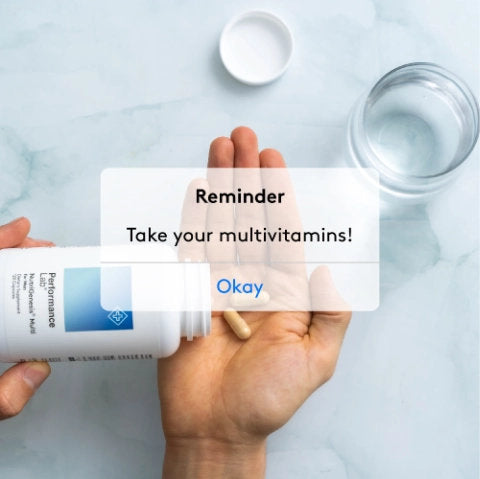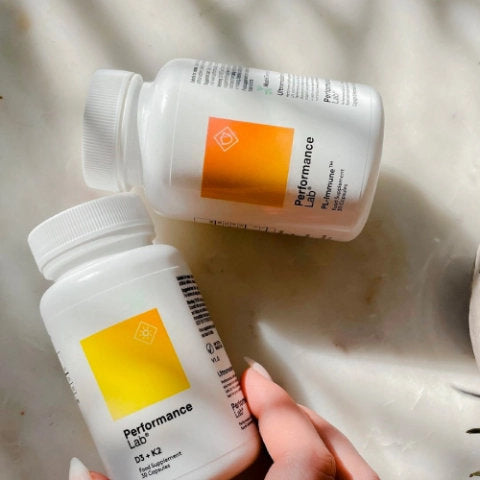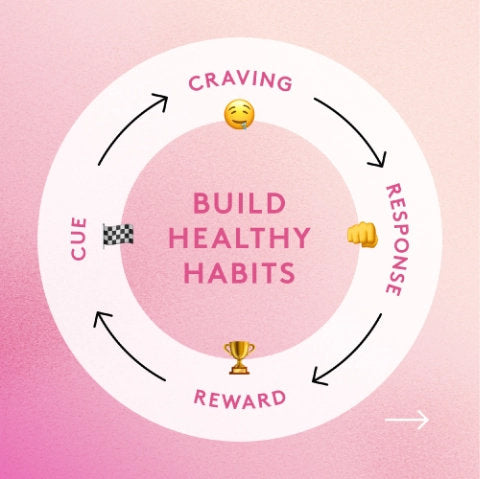We tend to spend a lot of time wondering whether we’re getting enough vitamin D, omega-3s, iron, and maybe even vitamin C. A lot of people take vitamins and other supplements to ensure they’re getting a sufficient intake of essential nutrients.
But there’s one nutrient that’s often overlooked that the vast majority of people are deficient in. And chances are you’ve probably never given it a second thought: potassium.
Most other vitamins take all the hype where supplementation is concerned, but it’s time that potassium gets some attention. So, we’re diving into a nutrient link you probably never thought about—vitamin D and potassium.
We’re covering what potassium and vitamin D are, the roles they play in the body, and the benefits of taking vitamin D and potassium together.
Breaking Down the Benefits of Potassium

Commonly lumped into the group of electrolytes, potassium is a key mineral that plays an essential role in several biological functions in the body. It is the main cation in extracellular fluid and is closely linked to the function of another electrolyte, sodium.
Potassium has a lot of great benefits with key roles in:
- Regulating heartbeat
- Blood pressure
- Proper nerve conduction
- Protein synthesis
- Glycogen synthesis
- Muscle contraction
- Fluid balance
Although it plays a significant role in several key functions, most Americans don’t get enough of it. Research suggests that only about 3% of Americans consume the recommended 4700 mg/day of potassium daily 1.
Potassium is naturally found in various foods but is heavily concentrated in plant-based food like fruits, vegetables, legumes, and seeds. For most healthy individuals with normal kidney function, abnormal potassium levels are rare.
Low potassium intake generally isn’t the result of poor dietary intake but rather excessive fluid loss. Low levels of potassium can lead to symptoms such as:
- Weakness
- Fatigue
- Muscle cramps
- Muscle aches and stiffness
- Tingles and numbness
- Heart palpitations
- Difficulty breathing
- Gastrointestinal problems
- Mood swings
The Deal With Vitamin D

If there’s one vitamin that takes the crown, it’s typically vitamin D. It’s a fat-soluble vitamin that tends to act more like a hormone. While it is found in animal foods like cold-water oily fish (salmon, sardine, mackerel, herring), the best source is sunshine. When UVB rays from the sun hit the skin, vitamin D is produced.
However, vitamin D that comes from the skin is biologically inert and must undergo hydroxylation in the liver and further hydroxylation in the kidneys to form the biologically active form of vitamin D, 1,25(OH)2D 2.
In its active form, vitamin D is involved in:
- Immune function
- Mood
- Inflammation
- Glucose regulation
- Bone health
- Cardiovascular function
- Cognitive function
Although it’s essential for virtually every system in the body, it’s estimated that over 50% of the population is deficient 2. It may not seem like a huge deal, but it’s now classified as a global pandemic that has some hefty consequences for health.
Hypervitaminosis is mainly attributed to lifestyle and environmental factors limiting sunlight exposure, but it can also be due to biological factors that inhibit absorption or dietary intake.
If you’re dealing with low levels of vitamin D, you could be experiencing things like:
- Bone pain
- Muscle weakness, aches, cramps
- Fatigue
- Mood changes (depression)
Not maintaining sufficient vitamin D levels can also leave you susceptible to more frequent illness, autoimmune conditions, heart disease, high blood pressure, diabetes, cancer, falls and fractures.
3 Benefits Of Taking Vitamin D And Potassium
1. Healthier Bones

Regardless of age, bone strength and integrity is non-negotiable. Not only does it protect you from falls and fractures, but it ensures your body is supported.
Calcium seems to be the go-to for bone health, but without sufficient vitamin D, calcium can’t do its job. Vitamin D plays an essential role in bone metabolism by regulating the uptake of calcium and phosphorus from the gut.
The active form of vitamin D, 1,25(OH)2D, stimulates intestinal calcium absorption, and without sufficient amounts, only 10–15% of dietary calcium and roughly 60% of phosphorus are absorbed 3, 4. With adequate vitamin D, however, calcium and phosphorus absorption are enhanced by 30–40% and 80%, respectively.
A deficiency of vitamin D leads to calcium, phosphorus, and bone metabolism abnormalities. It causes reduced absorption of dietary calcium and phosphorus, resulting in elevated parathyroid hormone levels 5, 6; high levels of PTH can lead to an increase in osteoclastic activity, which results in bone weakness and a decrease in bone mineral density (BMD), eventually causing the development of osteopenia and osteoporosis.
On top of that, we also have potassium which plays a much lesser-known role in bone health. However, research shows a link between dietary potassium intake and bone mineral density.
Osteoporosis is a disease marked by loss of bone mass, which leads to skeletal fragility and a higher chance of fracture 1. But because potassium is involved in acid-base (pH) balance, it may protect against bone loss.
Homeostatic mechanisms tightly regulate systemic pH to maintain it somewhere between 7.35 and 7.45. One theory on bone loss suggests that a diet high in acidic foods can cause low-grade metabolic acidosis.
Under normal circumstances, alkaline calcium salts in the skeleton act as a buffer to increase pH, which eventually reduces bone mass 7. However, alkaline potassium salts derived from increased intake of potassium-rich foods or potassium supplementation can offer protection against bone resorption to maintain proper pH homeostasis.
In other terms, increasing your intake of dietary potassium and vitamin D can protect bone integrity by neutralizing acid load and enhancing calcium absorption to protect against bone loss.
Learn more about Vitamins For Bones and Joints
2. Better Muscle Function

For anyone who exercises, you likely know about the role of electrolytes for muscle contraction. The frequency and degree to which muscles contract depends on having appropriate potassium levels in the body. Insufficient amounts can interfere with the movement of potassium, which ultimately compromises the nervous and muscular systems.
Here’s why. Sufficient levels of potassium are required to maintain the electrochemical balance across cell membranes, which is essential for proper nerve signal conduction. When there is a balance, we get normal skeletal muscle contraction, hormone release, and smooth muscle and heart contraction.
A small study published in BMJ Open Sport & Exercise Medicine with ten male participants found that consumption of electrolyte-rich water may reduce the occurrence of muscle cramps after vigorous bouts of exercise 8. Although we typically think about sodium for preventing muscle cramps, potassium is equally important.
But it’s not just potassium—vitamin D also plays a role in muscle function. Research shows that a deficiency of vitamin D is linked with elevated oxidative stress in skeletal muscle that can affect mitochondrial function and the development of skeletal muscle atrophy 9. More specifically, vitamin D deficiency reduces oxygen consumption rate and induces disruption of mitochondrial function.
What’s more, several studies have shown a strong link between serum vitamin D levels and muscle cell contractility, muscle strength, and postural stability 10. Low levels have been associated with proximal muscle weakness, gait disturbance, paresthesia, and muscle discomfort.
So, if you want to maintain healthy muscles and athletic performance, bumping up potassium and vitamin D levels is key.
Learn more about Vitamins For Muscle Tightness
3. Healthier Cardiovascular Function

Athlete or not, the health of the cardiovascular system for optimal performance and well-being is undeniable. It’s what maintains blood flow, oxygen, and nutrient delivery to support tissue function. When the blood vessels become damaged, it can lead to significant issues down the road.
Several nutrients are required for proper cardiovascular function, and potassium and vitamin D both make the list. There’s a substantial amount of evidence suggesting that increases in blood pressure are positively associated with increases in the risk of cardiovascular disease, especially coronary heart disease and stroke.
Even small changes in blood pressure can result in significant positive effects on mortality. Just a two mmHg drop in blood pressure can decrease mortality by stroke by 6% and coronary heart disease by 4% 11.
The American Heart Association suggests that sufficient potassium intake is one of the most important dietary factors that can reduce blood pressure. It’s estimated that bumping up your potassium consumption above >3500mg/day may reduce the incidence of hypertension by 17% and increase life expectancy by 5.1 years 12.
Here’s how potassium does it 1:
- Decreases intravascular volume (partially by reducing sodium reabsorption)
- Increases endothelium-dependent vasodilation via stimulation of sodium-potassium ATP pump
- Alters baroreflex sensitivity
- Increases sensitivity to receptors and hormones that influence vascular smooth muscle and sympathetic nervous system cell function
On top of that, we add in vitamin D. This guy has received a lot of attention lately for its role in preventing chronic diseases, and several studies have shown that low vitamin D status can significantly increase the risk of heart disease, stroke, hypertension, and diabetes 13.
The exact mechanism behind how vitamin D protects against CVD isn’t clear, but vitamin D receptors are expressed in many types of cells throughout the vascular system.
That includes vascular smooth muscle cells, endothelial cells, and cardiomyocytes, all of which produce 1α-hydroxylase—an enzyme that converts 25-hydroxyvitamin D to calcitriol, a natural ligand of the vitamin D receptor.
Calcitriol inhibits vascular smooth muscle cell proliferation, regulates the renin-angiotensin system (blood pressure), decreases blood coagulation, and exhibits anti-inflammatory properties 13.
Top Potassium Supplement: Performance Lab® Potassium

Maintaining optimal electrolyte balance is essential for peak physical and mental performance, and Performance Lab® Potassium provides a superior solution.
Formulated with bioavailable potassium, this supplement supports everything from proper hydration to healthy nerve function, ensuring your body operates at its best.
Key Benefits:
- Electrolyte Balance: Helps maintain optimal fluid balance in the body, vital for endurance and energy during intense workouts or daily activities.
- Muscle Support: Reduces the risk of cramps and spasms by supporting healthy muscle contractions and recovery.
- Heart Health: Plays a critical role in regulating blood pressure and supporting cardiovascular health.
- Bioavailable Formula: Features easily absorbed potassium chloride for maximum efficacy.
- Vegan, Non-GMO, and Clean: Free from synthetic additives and allergens, making it a perfect choice for those following clean living practices.
Boost your hydration, muscle function, and cardiovascular health with the natural power of Performance Lab® Potassium.
Shop Performance Lab® Potassium
Top Vitamin D Supplement: Performance Lab® D3+K2

Supporting bone strength, cardiovascular health, and immune function, Performance Lab® D3+K2 combines the perfect balance of essential nutrients for optimal well-being.
Featuring plant-based, bioactive vitamin D3 from algae and Vitamin K2 (from NutriGenesis®), this powerful duo works synergistically to deliver superior benefits.
Key Benefits:
- Bone Strength: Supports calcium absorption and distribution for stronger, healthier bones and teeth.
- Cardiovascular Health: Helps regulate calcium in the arteries, promoting arterial flexibility and heart health.
- Immune Boost: Enhances immune system function by modulating inflammation and supporting pathogen defense.
- Plant-Based and Clean: Contains vegan-friendly vitamin D3 from algae and natural K2, free from synthetic additives.
- Optimal Synergy: D3 and K2 work together to maximize health benefits for bones, heart, and immunity.
Fortify your bones, heart, and immune defenses with the clean, plant-powered performance of Performance Lab® D3+K2.
Final Thoughts
Taken together, vitamin D and potassium are two essential nutrients that the body needs to function optimally. While both offer their own advantages when taken individually, combined, they offer powerful benefits for bones, muscles, and blood vessels.
- Weaver CM. Potassium and health. Adv Nutr. 2013 May 1;4(3):368S-77S. doi: 10.3945/an.112.003533. PMID: 23674806; PMCID: PMC3650509.
- Nair R, Maseeh A. Vitamin D: The "sunshine" vitamin. J Pharmacol Pharmacother. 2012 Apr;3(2):118-26. doi: 10.4103/0976-500X.95506. PMID: 22629085; PMCID: PMC3356951.
- Lips P, Hosking D, Lippuner K, Norquist JM, Wehren L, Maalouf G, Ragi-Eis S, Chandler J. T he prevalence of vitamin D inadequacy amongst women with osteoporosis: an international epidemiological investigation. J Intern Med. 2006 Sep;260(3):245-54. doi: 10.1111/j.1365-2796.2006.01685.x. Erratum in: J Intern Med. 2007 Apr;261(4):408. PMID: 16918822.
- Lips P, Hosking D, Lippuner K, Norquist JM, Wehren L, Maalouf G, Ragi-Eis S, Chandler J. The prevalence of vitamin D inadequacy amongst women with osteoporosis: an international epidemiological investigation. J Intern Med. 2006 Sep;260(3):245-54. doi: 10.1111/j.1365-2796.2006.01685.x. Erratum in: J Intern Med. 2007 Apr;261(4):408. PMID: 16918822.
- Holick MF. Vitamin D deficiency. N Engl J Med. 2007 Jul 19;357(3):266-81. doi: 10.1056/NEJMra070553. PMID: 17634462.
- RP Heaney. Functional indices of vitamin D status and ramifications of vitamin D deficiency. Am J Clin Nutr. 2004;80(6 Suppl):1706S-9S.
- US Barzel. T he skeleton as an ion exchange system: Implications for the role of acid-base imbalance in the genesis of osteoporosis. J Bone Miner Res . 1995;10:1431–6.
- WY Lau, H Kato, K Nosaka. W ater intake after dehydration makes muscles more susceptible to cramp but electrolytes reverse that effect [published correction appears in BMJ Open Sport Exerc Med. 2019 Apr 11;5(1):e000478corr1]. BMJ Open Sport Exerc Med. 2019;5(1):e000478.
- KP Dzik, JJ Kaczor. Mechanisms of vitamin D on skeletal muscle function: oxidative stress, energy metabolism and anabolic state. Eur J Appl Physiol. 2019;119(4):825-839.
- P Polly, TC Tan. The role of vitamin D in skeletal and cardiac muscle function . Front Physiol. 2014;5:145.
- Stamler R. Implications of the INTERSALT study. Hypertension. 1991 Jan;17(1 Suppl):I16-20. doi: 10.1161/01.hyp.17.1_suppl.i16. PMID: 1986996.
- Roger VL, Go AS, Lloyd-Jones DM, Benjamin EJ, Berry JD, Borden WB, Bravata DM, Dai S, Ford ES, Fox CS, Fullerton HJ, Gillespie C, Hailpern SM, Heit JA, Howard VJ, Kissela BM, Kittner SJ, Lackland DT, Lichtman JH, Lisabeth LD, Makuc DM, Marcus GM, Marelli A, Matchar DB, Moy CS, Mozaffarian D, Mussolino ME, Nichol G, Paynter NP, Soliman EZ, Sorlie PD, Sotoodehnia N, Turan TN, Virani SS, Wong ND, Woo D, Turner MB; American Heart Association Statistics Committee and Stroke Statistics Subcommittee. Heart disease and stroke statistics--2012 update: a report from the American Heart Association. Circulation. 2012 Jan 3;125(1):e2-e220. doi: 10.1161/CIR.0b013e31823ac046. Epub 2011 Dec 15. Erratum in: Circulation. 2012 Jun 5;125(22):e1002. PMID: 22179539; PMCID: PMC4440543.
- JS Danik, JE Manson. Vitamin d and cardiovascular disease. Curr Treat Options Cardiovasc Med. 2012;14(4):414-424.











